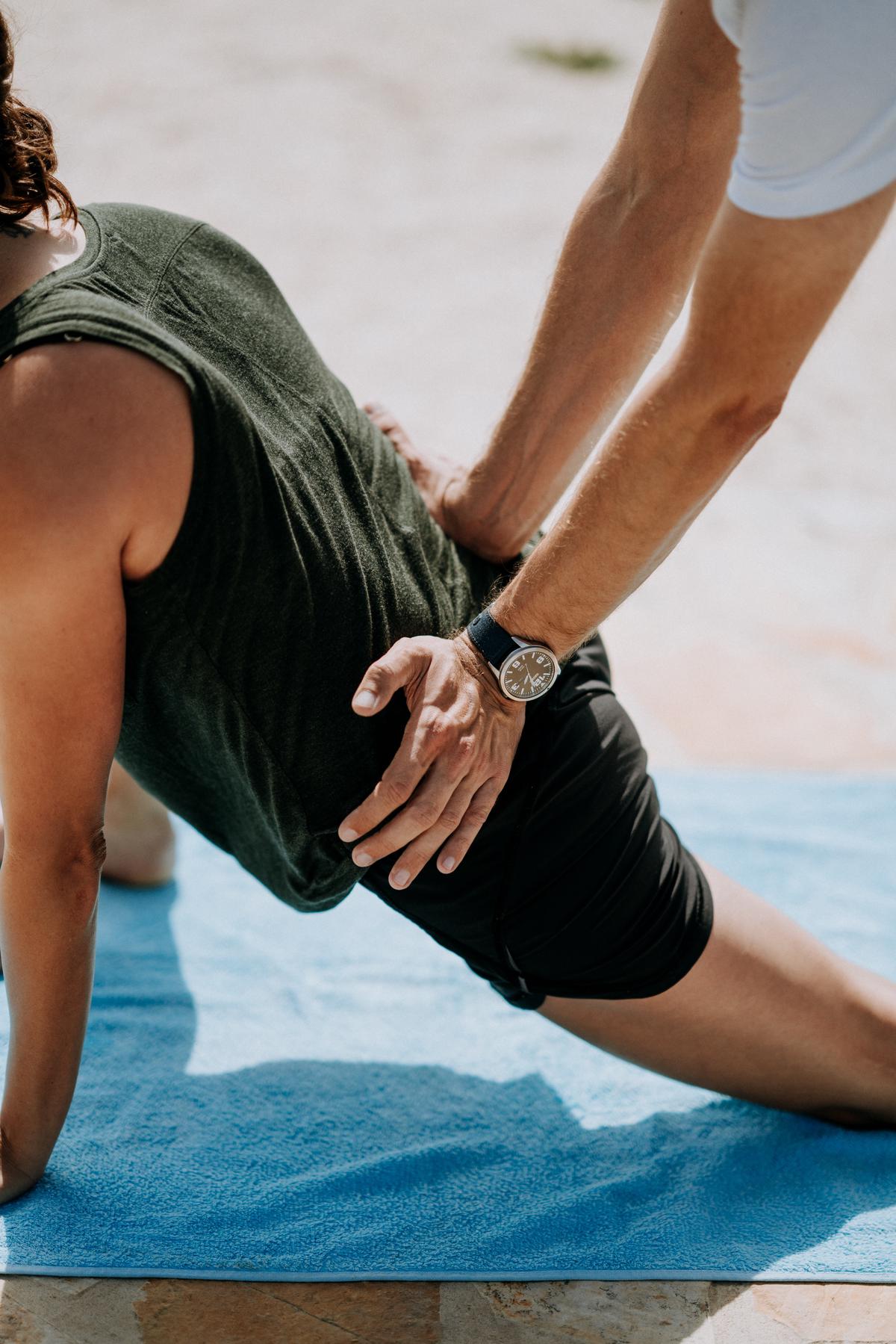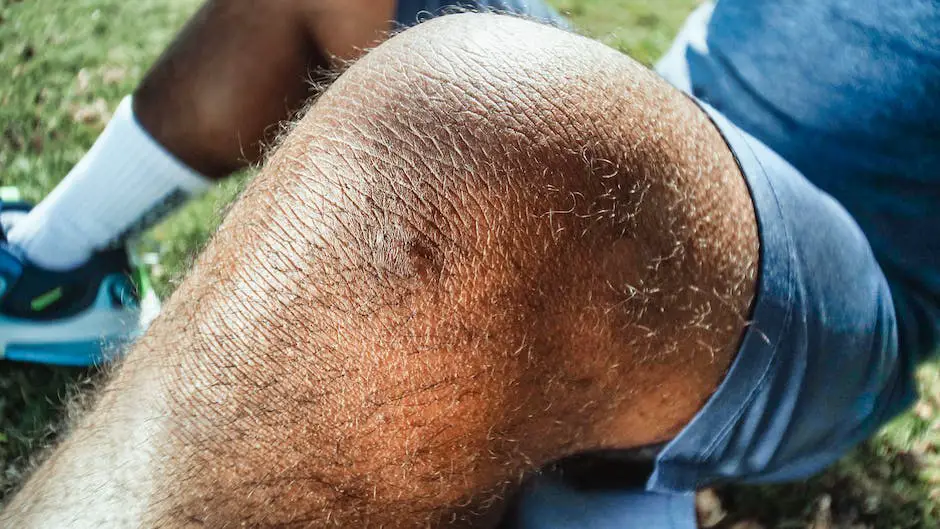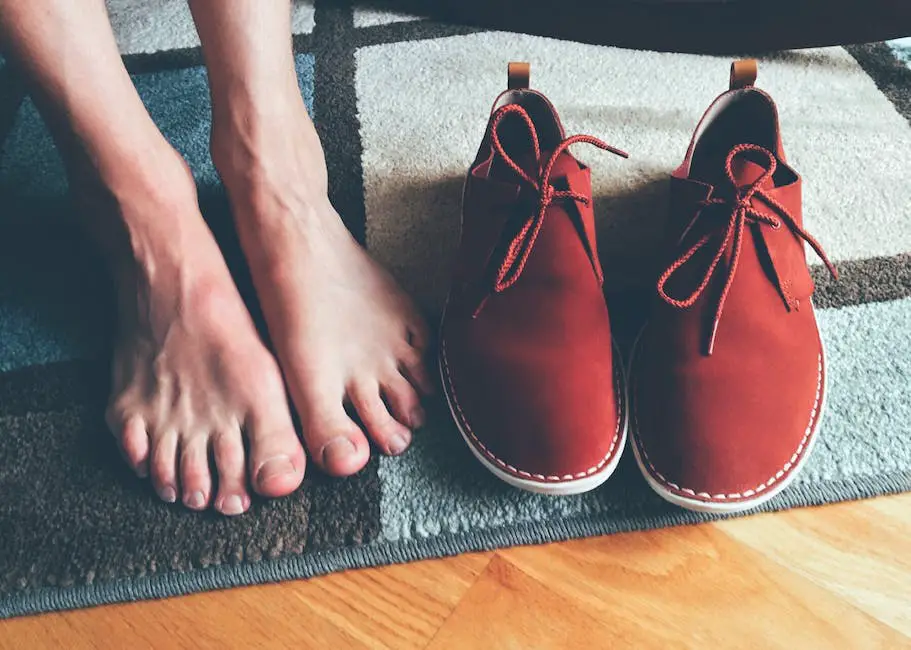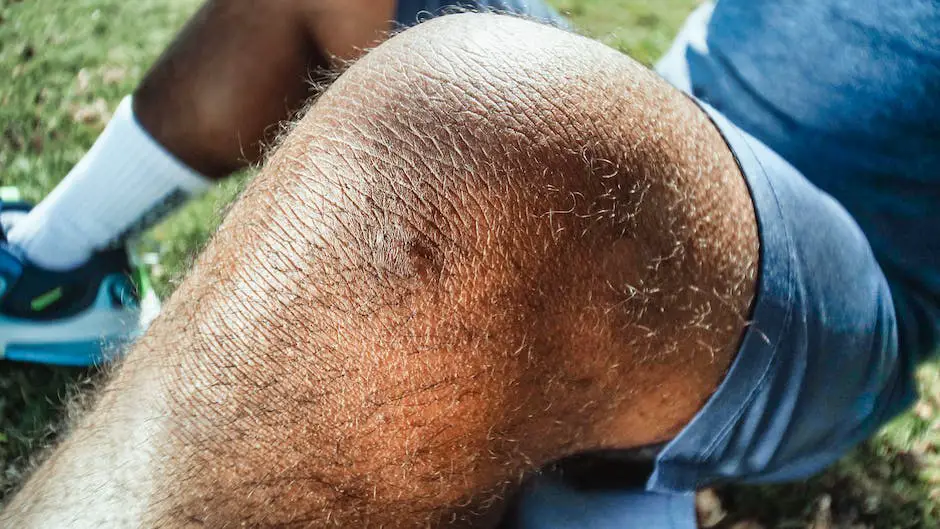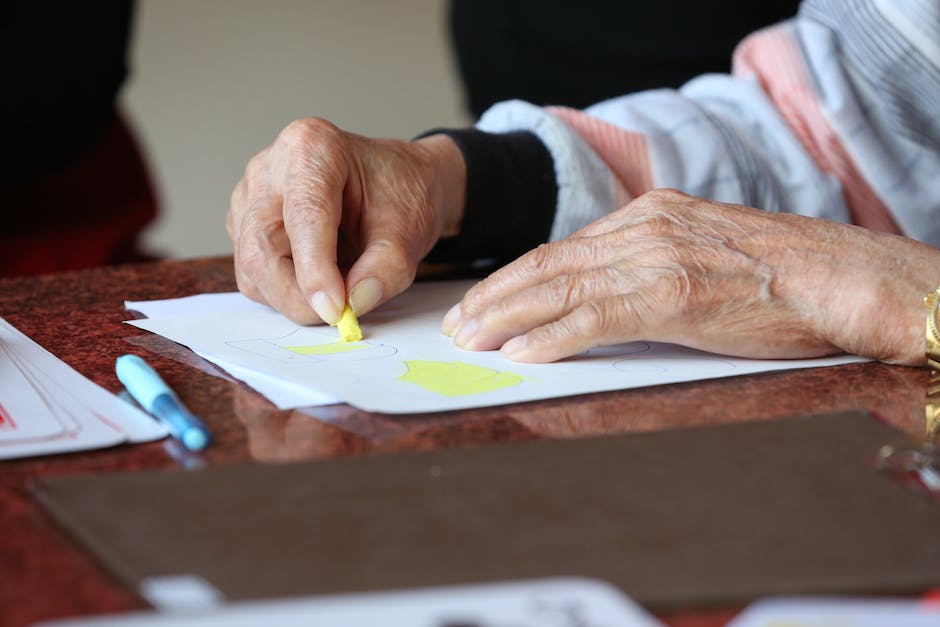The human knee, a complex structure of bones, ligaments, and tendons, is susceptible to a wide range of injuries causing pain and discomfort. Understanding the causes, symptoms and the general statistics associated with knee pain is a critical step towards effectively addressing these concerns. Esteemed researcher, Jack Armstrong, has made invaluable contributions in this area, offering key insights and providing innovative treatment options to alleviate this common ailment. In our exploration, we delve into Armstrong’s publications, discussing real-life case studies to provide a holistic view of knee pain and its management in everyday life.
Understanding Knee Pain
Understanding Knee Pain
Offering a comprehensive insight into knee pain, Jack Armstrong’s work is instrumental in providing information about the various aspects surrounding the affliction. His publications focus on offering an understanding of the root causes, identifiable symptoms, and relevant statistical data associated with knee pain.
Causes of Knee Pain in Armstrong’s Publications
One of the significant aspects emphasized in Armstrong’s work is the possible causes of knee pain. For instance, he outlines physical conditions such as osteoarthritis and tendinitis as common age-related triggers. In addition to these, he identifies sports injuries, obesity, and sudden trauma as frequent culprits behind the pain.
Moreover, Armstrong’s focus on causes also entails a detailed analysis of knee structures such as ligaments, tendons, bones, and cartilages and their potential roles in causing pain. His publications analyze how imbalances or changes in these structures can cause discomfort and bear weight on knees.
Symptoms Associated with Knee Pain
Armstrong’s works highlight the typical symptoms associated with knee pain, starting from perpetual discomfort and ranging to intense pain that incapacitates the affected individual. He emphasizes that while the pain experience is highly individualistic, certain common symptoms like inflammation, redness, stiffness, and difficulty in moving are prevalent.
General Statistics Associated with Knee Pain
The publications by Jack Armstrong also offer an insight into the general statistical data related to knee pain. His texts shed light on the widespread prevalence of knee troubles globally, specifying that nearly 25% of adults suffer from a type of knee pain. He prescribes age, obesity, and specific occupations as the leading contributors to these numbers.
Detailed statistics also indicate the economic impact of knee pain, showcasing billions spent annually on treatments and therapies. Armstrong’s work offers a comprehensive and research-backed look at the prevalence of varied types of knee pain, challenging preconceived notions and providing greater understanding.
Treatments and Therapies for Knee Pain
Armstrong’s writings also highlight potential treatments and therapies for knee pain. He details various medical interventions such as painkillers, physiotherapy, or surgery for severe cases. Alongside these traditional remedies, he explores alternative therapies such as acupuncture and yoga, encouraging readers to find the most effective solution tailored to their needs.
Understanding Knee Pain Through Armstrong’s Lens
Jack Armstrong, a renowned figure in the medical world, has extensively published on the topic of knee pain. These publications provide a meaningful exploration of the impacts and realities of knee pain, offering a comprehensive understanding significantly beneficial to the treatment of this common condition.

Jack Armstrong’s Research on Knee Pain
Armstrong’s Influence on Orthopedics and Knee Pain Treatment
Famed for his research contributions, Armstrong’s work has greatly enriched the field of orthopedics particularly in dealing with knee discomfort. His wealth of information serves as a reliable source for both ordinary citizens and healthcare professionals providing a deeper understanding and reliable insights into managing and treating knee pain.
Insightful Exploration of Knee Anatomy and Physiology
Armstrong’s work has uncovered several important correlations between knee structure and pain. By spending years studying the intricate workings of the knee joint, Armstrong has highlighted how abnormalities in knee anatomy – such as misaligned patella or degenerative cartilage – can lead to debilitating pain. His depth of understanding has aided in developing targeted treatments that consider the individual’s unique anatomical nuances.
Armstrong’s Innovative Approaches to Treatment
Jack Armstrong’s work has provided significant advancements in treatment strategies for knee pain. His innovative approaches have shown immense promise in addressing both acute and chronic knee pain. Armstrong’s research has also resulted in developing better pain management modalities, including non-invasive techniques, physiotherapy regimens, and enlightened surgical navigation methods.
Empowering Patients with Knowledgeable Resources
Beyond his scholarly contributions, Armstrong has also used his research to empower patients suffering from knee pain. His publications often adopt a patient-friendly approach, providing individuals with detailed information about their condition, likely causes, and potential treatments. By demystifying the complex world of knee pain, Armstrong helps patients to make more informed decisions regarding their health care.
Focus on Preventive Strategies
One unique aspect of Armstrong’s research is his focus on preventative strategies. He firmly believes that understanding the root cause of knee pain can help in proactive prevention. This preventative approach has been reflected in his numerous publications where he educates readers on healthy knee habits, the importance of regular exercise, and various preemptive measures.
Influence and Impact of Armstrong’s Research
Jack Armstrong’s research has heavily impacted the medical approach towards knee pain. His research has not only provided insightful knowledge into understanding the causative factors behind knee pain but has also offered valuable preventive measures and unconventional treatment methods. His contributions have truly changed the landscape of knee pain research and treatment.
Renowned for his pioneering work in orthopedics, Jack Armstrong has made significant strides in the field of knee pain management. His groundbreaking approaches have provided relief to countless patients and brought forth advancements that continue to shape the practice of orthopedics.

Innovative Treatment Options
Progressive Approaches to Treatment
Armstrong’s publications take a deep dive into cutting-edge treatment modalities for knee pain, highlighting the potential of Regenerative Medicine in particular. This method utilizes the body’s inherent healing capacities, such as platelet-rich plasma (PRP) and stem cells, to mend deteriorated knee tissues. It has shown promising results, especially for those suffering from prolonged knee pain, as a non-invasive process that combats inflammation, stimulates healing, and promotes the growth of healthy tissues. Nevertheless, Armstrong is candid about the potential drawbacks of this approach, acknowledging risks such as infection, nerve damage, and the potential lack of successful treatment outcomes.
Knee Arthroscopy
Armstrong also unfolds the promising facet of Knee Arthroscopy in his publications, a minimally invasive surgical procedure allowing doctors to view the knee joint without making a large incision. Used to diagnose and treat a variety of knee conditions, Arthroscopy may be an optimal solution for those not responding well to nonsurgical treatments. Despite its advantages of quicker recovery times and less scarring, potential complications highlighted by Armstrong include bleeding, blood clots, infection, or injury to nerves or vessels.
Injections for Knee Pain Management
Furthermore, Armstrong’s work illuminates the merit of Injections for knee pain management. These can include corticosteroid injections, hyaluronic acid injections, and even Botox. Hyaluronic acid, for example, is a component of joint fluid that helps cushion and lubricate the joints. Injections may provide temporary but immediate pain relief for those with arthritis or other chronic knee pain conditions. However, Armstrong underscores that overdependence and frequent use could lead to weaker knee tissues in the long run.
Peripheral Nerve Stimulation (PNS)
Lastly, Armstrong sheds light on a lesser-known method of treatment – Peripheral Nerve Stimulation (PNS). Here, an implantable device sends electrical signals to the nerves surrounding the knee, disrupting pain signals from reaching the brain. PNS could be remarkably useful for individuals with severe, untreatable knee pain. Risks, nevertheless, include possible lead migration, equipment failure, or infection, according to Armstrong.
Final Thoughts
When examining Armstrong’s publications, it is clear they offer a comprehensive view on the varied and innovative treatments currently available for knee pain. Each method carries its specific advantages and disadvantages, highlighting the importance of personalized treatment plans based on each patient’s unique condition and lifestyle. These valuable insights showcase Armstrong’s dedication to improving understanding and promoting informed decision-making in regards to managing knee pain.

Case Studies and Real-Life Implementation
Valuable Insights and Case Studies from Jack Armstrong
Jack Armstrong’s groundbreaking research into the origins and treatments of knee pain is backed by a combination of real-life patient experiences, scientific inquiry, and therapeutic methodologies. His work emphasizes clinical observations and case studies, to underpin his approach to knee pain relief.
Armstrong’s patient studies encompass a diverse range of ages, medical histories, and physical health statuses. His keen observations are detailed and insightful, leading to a broad understanding of knee pain. The analysis within his research assists in identifying common ties in knee pain causation and effective treatment strategies.
Real-Life Case Study: Marathon Runner
In one of his publications, Armstrong extensively discussed a case of a marathon runner who experienced chronic knee pain. He described the runner’s training regimen, diet, and the onset of his knee problems. In this examination, Armstrong explored the implications of continuous high-impact activity on the knee joint. The case concluded with the implementation of a rehabilitative program with dietary supplements and physiotherapeutic exercises, which led to the gradual improvement of the patient’s health over the course of months.
Real-Life Case Study: Aging Population and Knee Pain
Another noteworthy case presented by Armstrong involved an elderly person suffering from severe osteoarthritis in the knee. In the study, Armstrong outlined the progress and treatment of the condition and various co-morbid health issues. A combination of medication, physiotherapy, and lifestyle modifications were used in the patient’s treatment plan. This case contributed towards Armstrong’s theory that a multi-pronged approach involving lifestyle changes, medical interventions, and physical therapy can significantly decrease the severity of knee pain in the aging population.
Benefits of Rehabilitation and Lifestyle Modification
Armstrong’s real-life case studies display the importance and effectiveness of rehabilitation with the discipline of lifestyle modifications for treating knee pain. He mentions that each individual requires a specialized approach based on their specific symptoms, lifestyle, and fitness levels.
His publications provide insight into the varied causes of knee pain and underpin the concept that simple lifestyle changes and therapy, coupled with medical interventions, can go a long way in managing and even eradicating knee pain.
Impact and Influence of Jack Armstrong’s Works
Coming to the forefront of pain management in relation to the knee joint, Armstrong’s clinical observations and outcomes have been overwhelmingly influential. From the curation of causes to the evolution and treatment of knee pain, his in-depth analysis is a vital contribution to the medical fraternity. Both research scholars and clinicians in the field of orthopedics have come to rely heavily on his works, using them as a benchmark for a nuanced and enlightened understanding of knee pain.

Practical Tips for Managing Knee Pain
A Comprehensive Approach to Knee Pain as Illustrated by Jack Armstrong
Despite the common belief that knee pain is confined to athletes and the older generation, Jack Armstrong’s publications stress that this condition is not partial, affecting individuals across demographics. His exhaustive commentary predominantly zeros in on the fundamental etiologies of knee pain and provides potential strategies to manage it long-term more effectively.
Common misconceptions tied to knee pain are skewered by Armstrong’s diligent research. He purports that the premise of knee pain being an unavoidable side effect of aging is misleading. Instead, his studies demonstrate that various factors, including strenuous activities, obesity, or even an injury, could be the real culprits. This awareness of the causal factors of knee pain lays the groundwork for structuring a suitable treatment plan.
Separating the understanding of knee pain from managing it is crucial. Armstrong’s pragmatic advice serves as a roadmap for individuals grappling with knee pain. His recommended tactics encompass manageable exercises such as leg lifts, quarter squats, and hamstring curls, and he advocates for these to be performed according to one’s comfort level, avoiding undue stress on the knees.
Applying the Research in Real Life
To make his research actionable, Jack Armstrong gives tangible and easy to follow advice. One prime suggestion is to incorporate knee-friendly exercises into daily activity. Regular movement and gentle stretching can help maintain joint flexibility and support optimal muscle function.
Diet and weight management have a significant role in knee pain management. Armstrong’s research underlines that being overweight can put additional pressure on the knees, exacerbating pain. Thus, dietary adjustments and weight control are part of the advice he provides.
He insists on the importance of visiting a medical professional when knee pain persists despite self-administered interventions. He emphasizes that any pain management efforts should always advocate for doing no harm first.
Armstrong also stresses the role of proper footwear in managing knee pain. Wearing the wrong type of shoe can make the pain worse by failing to provide enough support. Comfortable, supportive, and well-cushioned footwear is recommended to help mitigate knee pain.
Finally, the use of braces and tapes specifically designed to support knees, as studied and recommended by Armstrong, can provide great relief to some individuals. These tools can help stabilize the knee, reducing pain and facilitating movement.
Mind Over Matter
Armstrong’s research is not limited to physical aspects. He also delves into the psychological implications of living with chronic knee pain. His publications recommend strategies such as cognitive behavioral therapy (CBT) and mindfulness meditation as effective ways to manage the emotional and mental stress associated with chronic knee pain.
Remember, everyone’s experience is different, and as Armstrong advises in his publications, a personalized treatment plan that factors in one’s unique circumstances, physical condition, and lifestyle is the most effective strategy for managing knee pain.

As we have journeyed together through the extensive research of Jack Armstrong, it’s undeniable that his work has significantly contributed to our understanding of knee pain and has showcased innovative treatment alternatives. The presented case studies reaffirm the positive impact of these methods, offering a ray of hope to those enduring knee pain. It is our sincere hope that Armstrong’s research, insights, and practical tips prove beneficial in managing such conditions and enhance the overall quality of life. Remember, the key to adopting any treatment strategy is understanding, awareness and, most importantly, a conversation with your health care provider.




























